Bulletproof with Isometrics
by Paul “Coach” Wade
Hey there, iso afficionados! Your old pal Paul is back again—completely unrequested—to remind you why you should damn well be doing isometrics…and we are gonna stay here until you agree with me. (You’re already doing them? Damn! You’re ahead of the game, kid! I knew there wuz something cool about ya!)
In most of my recent articles, I’ve been yammering on about isometrics and athletic qualities. I’ve told you how isometrics are the best way to
improve absolute strength, with a bullet; I’ve told you how isometrics are the secret key to
huge muscle gains; I’ve even told you how isometrics can make you lightning fast. (If you’re into speed, you’ll love
this ground-breaking article by my buddy, Jarell Lindsey.)
And—whaddya know—since Dragon Door released the
Isochain, we’ve had a ton of feedback on all those things. We’ve had reports from dozens of athletes (even advanced athletes) telling us that the Isochain
has improved their strength and size—and not just a little.
Radically.
But what’s surprising is that most of these athletes are also talking up the
healing power of the Isochain. "Bad knees" suddenly become "good knees". Worn-out lower backs become young and strong again. Stiff shoulders and elbows seem magically "oiled" somehow. And on and on.
Because this feedback keeps flooding in, I wanted to share with you some of the reasons why you should be looking into isometrics if you have aches and pains, injuries, or even just a desire to stay supple and injury-free as possible.
Here are six awesome reasons why isos rule for healing your body and becoming bulletproof!
#1: Isometrics eliminate chronic joint wear and tear
This is a big one, right here.
Resistance training—getting bigger and stronger—is the bomb. There’s nothing quite like the feeling of growing physically more powerful—and, perhaps, more imposing—while those around you grow weaker and fatter year by year. There is, however, a traditional price to be paid:
pain.
The bigger and stronger you become, whether via barbells, dumbbells, machines, or whatever, the more
force you must use in your training, to maintain your gains and keep moving forward. All that weight adds up; thousands and thousands of pounds, over and over and over again, with no respite for fear of slipping downstream. In the battle between these titanic forces and the joints of mortal man, the forces always win. Before too long, the aches and pains crawl into bed with you at night, and wake you up whenever they can, and you begin to wonder if this sh*t is worth it.
It’s not just the more mature athletes who have these problems. I’m constantly hearing from younger guys—even teens—who have jacked up shoulders, stiff lower backs, aching knees…even elbows, wrists, ankles and necks.
Chronic joint pain is primarily caused by abrasion within the joints. When you combine high forces (like a bone-crushing barbell) with joint movement, soft tissues, tendons and cartilage rub together under tension. Over time, damage occurs, gliding surfaces are compromised, and the friction increases. The result is more damage, and pain and inflammation.
I liken this internal abrasion to rubbing sandpaper on a wall. If you push hard against the sandpaper and rub, the result is friction and the surface of the wall is damaged. The forces involved in weight-training are the pushing, the movement ("reps") are the rubbing, and the wall represents the joint.
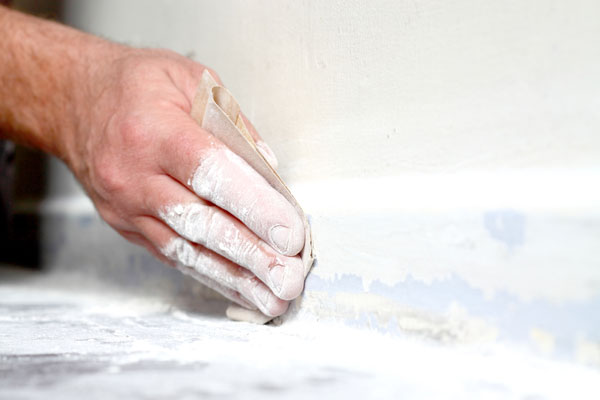
So—what can we do? In resistance training, we can’t get rid of the high forces. We just can’t. But we can get rid of the movement.
Now imagine pushing down even harder against the sandpaper, but not moving. The friction reduces to close to zero, as does the damage. This is isometrics. The forces are huge, but there is no movement. As a result, the abrasion damage vanishes, also.
Developing the Isochain, we worked with multiple athletes who loved to train, but had been forced to quit squatting and pressing with barbells due to the continual pain. After a period of progressive conditioning with the Isochain, these men were able to work squats and presses back into their programs—using heavier loads than ever before, but with zero pain. Every day we get more feedback from lifters who thought they were "done", before discovering they can use more "weight" than in their prime, thanks to the Isochain.
Such is the incredible power of isometrics!
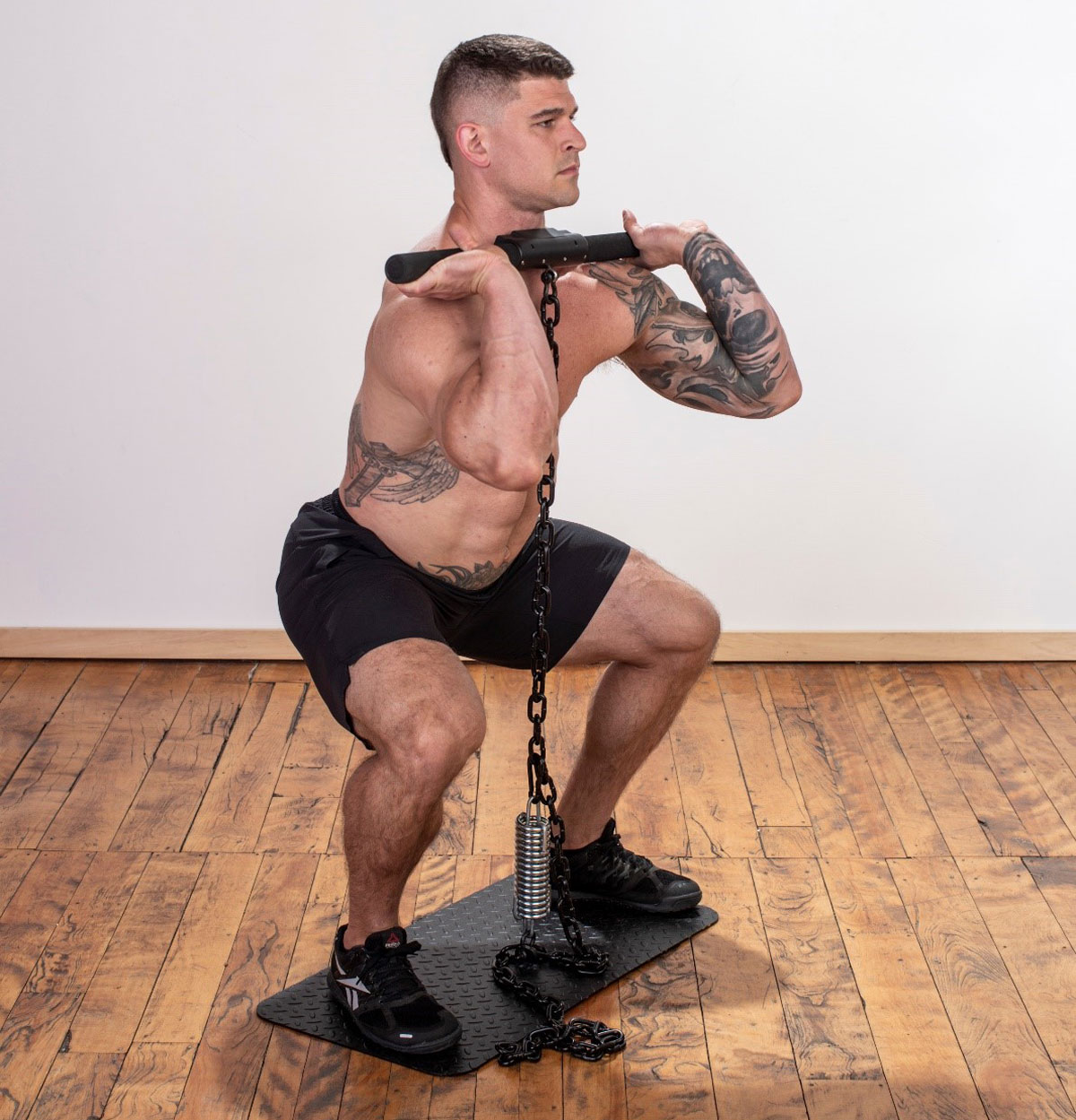
#2: Relief from tendon pain
Isometrics don’t just stop you generating new pain—isos actually
eliminate pre-existing aches and pains.
Recent research has shown that heavy isos (70% of max) have a powerful analgesic effect on tendon pain.
In the words of the lead researcher, Dr Ebonie Rio:
…a single bout of heavy (70% MVC) isometrics reduced tendon pain pretty much instantly (and lasted at least 45 minutes), it also reduced the associated muscle inhibition, resulting in an increase in muscle strength…The most important thing from the research? Tendons seem to love heavy isometric load and it reduced tendon pain immediately.
This is something we found during our own research, developing the Isochain. Guys with painful knees, elbows or even low backs would bust out a heavy isometric hold, and the pain magically vanished. I wrote
elsewhere that one of our prototype athletes quit taking Tylenol—if his knees ache, he trains them! How cool is that? Think about it: if your heavy training actively
reduced your pain, rather than
causing it, how much more likely would you be to keep on training indefinitely? What kind of gains could you make?
The biology of this pain relief appears to be related to cortical inhibition—isometrics seem to almost magically switch off certain neurological blocks to high performance; it’s one of the same reasons isos produce seemingly
superhuman strength gains.
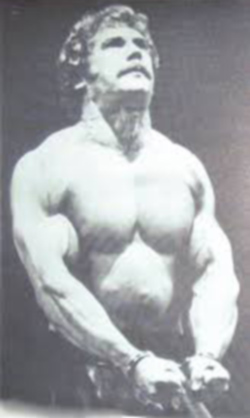
Mike Dayton—bodybuilder, strongman, and kung fu master—used plenty of isometrics in his act. The only thing he broke was steel handcuffs.
#3: Enhanced bone density
Muscles of iron are one thing (and isometrics can give you that—isos have been proven to increase muscle
density better than conventional lifting), but how badass would it be to have a skeleton of
adamantium—completely unbreakable, just like Wolverine?
When you have strong, healthy bones—as they were meant to be—that kind of superpower is not so far from the truth. Healthy bones are more than four times stronger than concrete; they have a similar compressive strength to steel, while being about three times lighter. It’s been estimated that
a cubic inch of bone can support nearly 20,000 lbs—that’s five pickup trucks!
So how do I get me one of these mutant super-skeletons?
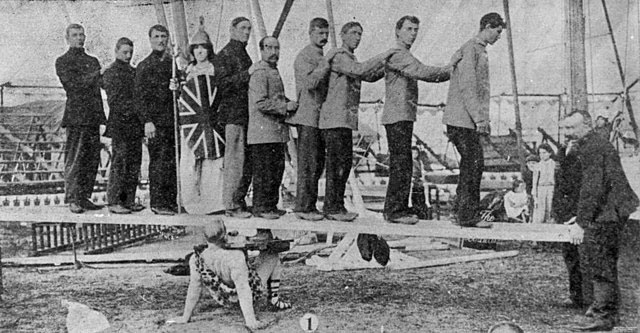
The old-time strongmen all built their superheroic bones using isometric holds.
Skeletal bone becomes denser and more durable due to the piezoelectric effect. Bones are piezoelectric, just like components in modern technology—this just means that when they are subject to stress, they release a current. In osseous tissue, this current attracts minerals which are absorbed into the existing bone, making it stronger and more durable. The biology behind this increasing bone density has been summarized as "Wolff’s Law", which states that the greater the forces placed on bone, the greater the remodeling, and the denser that bone becomes over time
Conventional up-and-down lifting of weights can improve bone strength and health. But the forces involved are strictly limited by the weights you can move. Of course, you can hold weights far, far heavier than those you can move—so isometrics frees you to explore higher forces than regular lifting, and consequently the adaptation according to Wolff’s Law is greater. Numerous studies have shown that isometrics beats out dynamic lifting in improving bone density.
Besides [reducing] blood pressure, isometric exercise is associated with other beneficial effects consisting of an increase in muscle bulk, upper and lower body strength, increases in bone density, and a decrease in bone fractures. -The Journal of Clinical Hypertension (2010)
"Bone fitness" centers are springing up all around the country, packed with equipment costing many thousands of dollars—all of which exploit simple isometrics. These centers are thriving because folks are starting to realize that bone health and strength is an important part of overall health, particularly in terms of longevity. Most people know that older women are at risk of osteoporosis—weak and brittle bones. This is because the female hormone estrogen declines during the menopause; many bodybuilders think of estrogen as a somehow "negative" substance, but estrogen is in truth an anabolic compound—particularly where bones are concerned. In fact, estrogen was originally the only drug used to combat osteoporosis. (Rather than building bones up, estrogen actually works by preventing the loss of minerals in bone tissue, keeping it dense and healthy). Men are by no means immune to bone loss as they age, either—men over fifty are more likely to experience a bone fracture than prostate cancer.
Fortunately, drugs and hormone compounds (toxic, and associated with some brutal side effects) are not required to solve the issue of bone weakness. The natural activation of Wolff’s Law is all that is necessary. Isometric exercise can not only completely prevent this age-related bone loss in men and women, it can reverse it, and return bone density to teenage levels. The Isochain is the perfect device for increasing bone density this way; the loads are autogenic (i.e., safe), the forces and progress are digitally measurable, and it can be used at home—as frequently as you like, for faster development.
You want to be more like Wolverine? Isometrics get you further, faster, baby.
#4: Tougher, more durable connective tissues
Isometrics helps athletes exploit Wolff’s Law for tougher, healthier, more bulletproof bones. But Wolff’s Law has a corollary law, which applies to the tendons, ligaments and other fibrous connective tissues. This twin principle is called Davis’s Law: the more force you place on connective tissues, the denser and stronger they become.
Muscles can (and do) tear on athletes all the time, but nowhere near as often as tendons, ligaments, bursae and even cartilage. The old-timers knew this, and they instinctively applied Davis’s Law; as well as performing moving exercises for the muscles, they all performed heavy isometric holds for the "sinews": brutal hand-and-thigh lifts, deadlifts, squat holds, bridge holds, curl holds and presses. The legendary John Grimek performed isometric presses with up to a thousand pounds on the bar!
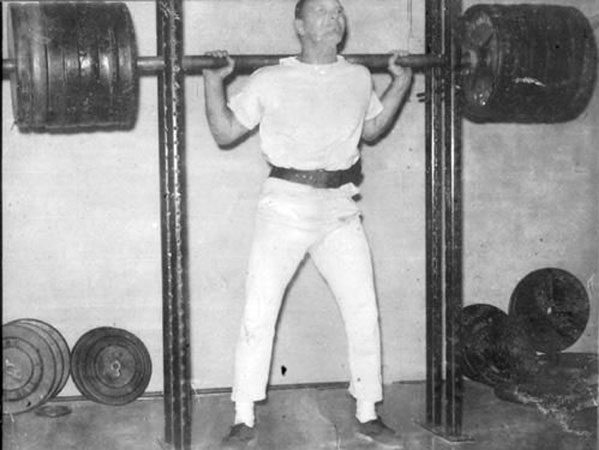
Champion Dick Smith works iso-squats in the power rack.
These super-heavy holds—more than the strongest men could ever move—forced them to "lock up" their bodies with maximum tension, just to remain upright. Huge forces were poured into their joints and soft tissues, triggering Davis’s Law and giving these men the kind of joint integrity you’d expect to find in a full-grown silverback gorilla. Most advanced bodybuilders today are delicate. They shy away from real sports, to avoid boo-boos; but the old school lifters were rough, tough dudes. They were a different generation. They played football, basketball, boxed. Their isometric training made their bodies and joints so heavy duty, so damn tough, that they didn’t have to worry about contact injuries. That, to me, is real bodybuilding. You can also reap these benefits—but you don’t need a fully equipped gym, a power rack, and the risk of a thousand pounds on your spine. An Isochain will allow you to pull, press and curl limit weights—and it will also tell your true max, with digital accuracy. Discovering a true limit weight is almost impossible in the power rack, as you push a loaded bar into the pins above—you know how much force (weight) is on the bar, but how much is going into the pins? Now we can know.
#5: Amplified soft tissue remodeling
The benefits of isometrics go even further than damage prevention and pain relief. Science has shown that isometrics can actively help damaged soft tissues heal—and not just light, wussy stuff, either. Heavy isos.
You might assume that the best way to heal injured tissue is to rest it; while rest does have its place, prolonged rest actually
slows tissue healing. Studies have found that isometric training increases blood flow, neurological facilitation, and triggers the kind of metabolites which cause injured tissues to recover and remodel more rapidly at a cellular level. The effects are so profound that some physical therapists have called isometrics a
"healing ignitor":
Isometric exercise has recently come into the research due to its ability to produce significant pain relief in patients with tendon pain. In addition, these exercises provide an excellent starting point for patients with tendon pain due to their control, safety, and low energy costs relative to their strength training exercise counterparts. The research has shown benefits in both short and long duration isometric holds but the intensity of the exercise should be high. Systematic reviews have documented a force of at least 70% of maximum voluntary contraction (MVIC) is required to improve tendon structure (remodeling) and function (Oranchuk et al., Scandinavian Journal of Medicine & Science in Sports, 2019). -"Mend", Colorado
Train heavy and heal up?! This is an honest to goodness biohack right here waiting for you, people.
#6: Optimized rehabilitation and safety
Isometrics is sometimes called a "fad" that comes and goes; but, in reality, isometrics have always existed in the strength world, quietly kept alive by those "in the know". Top powerlifters and bodybuilders have all been performing isometrics in their programs in some shape or form, since Eugen Sandow’s day—that never stopped, and it will never stop.
One place isometrics have always been visibly front and center is in the field of
rehabilitation. Anyone who knows anything about serious rehab—or who has been forced to experience it—knows this. Why? Ask a
physical therapist:
What are the benefits of isometric exercises?
- They are an excellent starting point for strengthening in the rehabilitation process from an injury. There are plenty of studies that have shown isometric exercises to prevent atrophy (wasting) of muscles in the initial stages of healing.
- They are a great way to isolate specific muscle groups. This contrasts with compound exercises which work a variety of muscle groups together. Individualized strengthening provided by isometric exercises can then in turn improve compound movements.
- They are convenient. Isometric exercises can be done anywhere, any time and often with no need for equipment.
- They can enhance sport performance. In many sports, certain movements produced by one body part require stabilization from other body parts. A classic example of this is kicking a soccer ball. To kick with your right leg, means that you must stabilize your body with your left leg. The left leg then acts in an isometric manner. A weakness in the left leg will then lead to a break down in the entire movement.
- Reduction of pain levels from certain musculoskeletal injuries. A classic example is tennis elbow which causes pain on the outer part of the elbow and forearm. Research has shown that doing specific isometric exercises for the wrist and elbow are effective in reducing pain levels in tennis elbow.
Isometrics are also the safest form of resistance training. Most acute injuries occur when tissues are subjected to more force than they can handle; for example, when we lift a weight that’s too heavy using momentum and "catch" it on the negative. But with an Isochain, the forces used—although maximal—are not external. They are entirely internally generated and autoregulated by your own central nervous system. In addition, there is no momentum. You can never get taken by surprise by unknown forces multiplied by mean ol’ gravity.
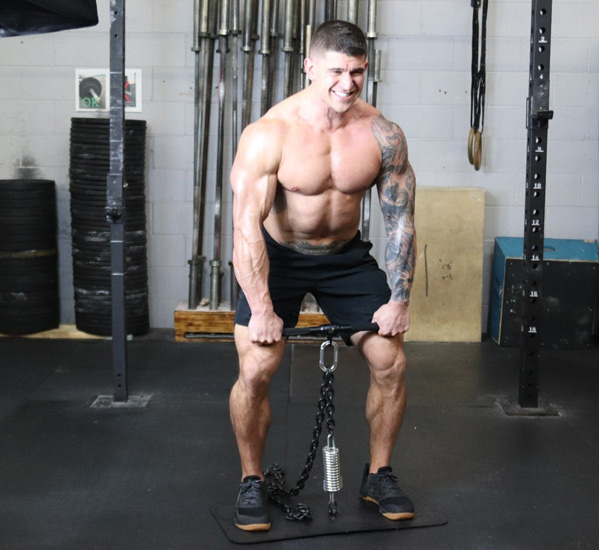
These factors make Isochain training the safest form of resistance work, even if you are using heavier weight than other methods. Hands down. And although injury prevention isn’t as sexy as talking about how to pump up your bench press, it’s much, much more important if you want to get as big and strong as your potential will allow. Why? Take it from an old-timer: injuries slow you the hell up, my friend. Tear a shoulder, quad or bicep, and it’s a few days off training, then maybe a month or two of rehab, then a couple months training around the injury, and then a month or two (or three or four) to slowly and carefully build back where you were before you got banged up. That’s six months’ worth of solid training that the competition got under his belt that you didn’t.
…I want you to be the competition: the guy that doesn’t get hurt!
****
Okay, so now you know the fundamental reasons why isometrics are the goddam bomb when it comes to healing. Don’t forget—the best part is, you don’t even need an Isochain to start getting results in these areas. You certainly don’t need drugs, special supplements, or clinics full of expensive equipment. You can begin with just your own body. Start with simple tension exercises, and graduate to pushing and pulling on doorways, walls, or whatever else you can get your hands on. If you want to take things to the next level, my
Ultimate Isometrics Manual contains scores of zero-tech isometrics, and isometric bodyweight progressions going all the way from super easy up to super advanced.
Want to make 2021 the year you finally get that healing done? Learn to stop moving!
Back